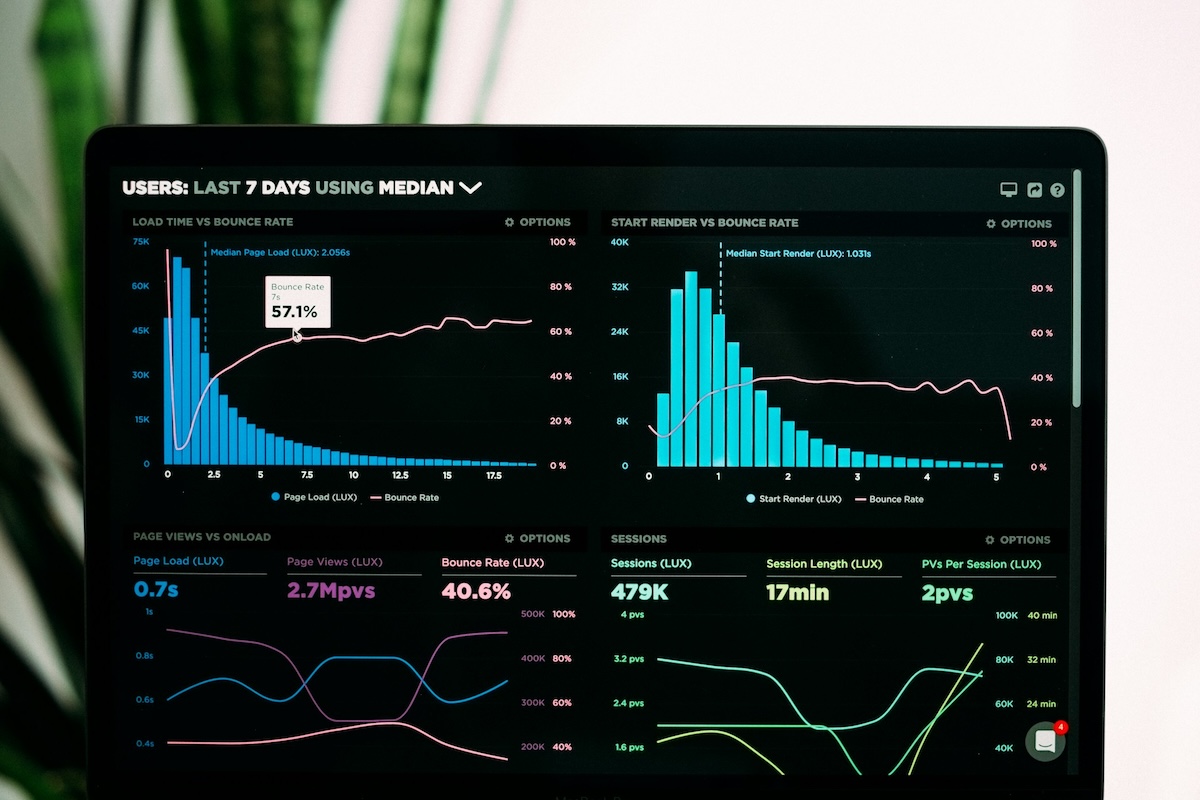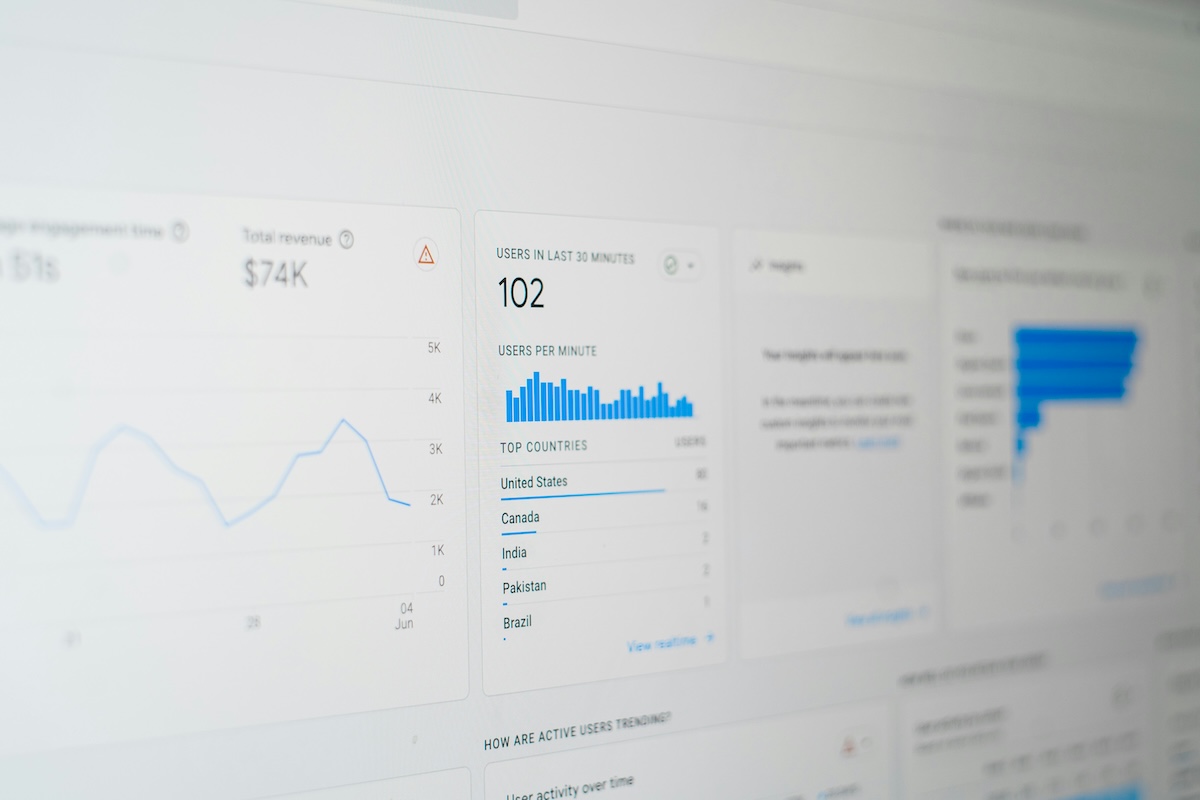In the digital ecosystem, data is the new oil. But let's be honest: most companies are drowning in it. They present you with dashboards full of graphics that go up and up — impressions, visualizations, followers — and you feel incredible. It's an adrenaline rush, a vanity kick.
But when the end of the month rolls around and you look at your income statement, the story is different. Where is the real impact?
Welcome to the great secret of digital marketing: not all metrics are born equal. 89% of marketing leaders use them, but only a fraction know how to distinguish between Noise that inflates the ego And the signal that multiplies the ROI.
In SEOTopSecret, we don't manage campaigns; we design growth engines. And after analyzing the strategies of more than 100 companies, from disruptive startups to global brands, we've cracked the code. We separated the grain from the chaff.
This article is not a list of definitions. It's a manifesto. We'll teach you to turn off the noise, to ignore vanity metrics that make you feel good, and to obsess over the few metrics that actually build profitable and scalable businesses. Get ready to measure what matters.
Vanity Metrics vs. Performance Metrics
Imagine that you are the coach of a soccer team. A player says to you: “Coach, I ran 15 kilometers!” It sounds impressive. But how many passes did he complete? How many shots on goal did you shoot? How many goals did he score? Running for the sake of running doesn't win games.
The same is true in marketing. Vanity metrics are the distance traveled; performance metrics are the goals on the scoreboard.
Followers vs. Qualified Leads
Having 100,000 followers on Instagram is fantastic for a screenshot. But if those followers have never shown the slightest interest in buying, they're just a crowd of strangers. On the other hand, having a list of 500 qualified leads (MQLs) —people who have downloaded your guide, signed up for your webinar, or requested a demo—is having 500 potential sales conversations.
As detailed in our blog about the digital marketing funnel, a qualified lead has already raised their hand. The difference is abysmal: followers are a passive audience; qualified leads are the future of your income.
Visualizations vs. Effective Conversion
Your homepage had 60,000 visits last month. Incredible! Or not? How many of those visits left in less than 5 seconds (high bounce rate)? How many filled out a form, bought a product or subscribed to your newsletter?
The conversion rate is the thermometer of truth. Shows the percentage of visitors who perform the action that You you want them to perform. For our customers, such as Dogelthy O VEMoility, we don't celebrate traffic; we celebrate conversions, because they are the ones that pay the bills and finance growth.
Here's the fundamental difference in a table:
Marketing is not a popularity contest. It is a business function whose objective is to generate revenue. In SEOTopSecret, when we work with clients such as Motel to Mexicola, the best Mexican restaurant in Bali, our first task is to change the approach: we stopped chasing likes and started designing systems that generate reservations.
The 6 Basic Digital Marketing Metrics
After analyzing the performance of hundreds of campaigns, we've distilled the data universe to just six fundamental metrics. If you can measure and improve these six, you are in control of your business destiny.

1. Customer Acquisition Cost (CAC)
- What is it? It's exactly how much you spend on marketing and sales to get a single new customer.
- Why does it matter? It's the health indicator of your growth machine. If you CAC It is higher than the value left by a customer, you are on a countdown to bankruptcy. A low, controlled CAC means that your strategy is efficient and scalable.
- The Formula: CAC = (Total Cost of Marketing + Sales)/Number of New Customers.
- In Action: Una SEO strategy for startups Well executed, it's one of the most powerful ways to reduce CAC in the long term, attracting customers organically instead of paying for each click.
2. Customer Lifetime Value (LTV)
- What is it? It's the total income you expect a customer to generate throughout their relationship with your company.
- Why does it matter? Change your mindset from a transaction to a relationship. Acquiring a new customer is 5 to 25 times more expensive than retaining an existing one. A high LTV allows you to spend more to acquire customers (a higher CAC) and remain profitable. The magic is in the LTV:CAC relationship. A healthy ratio is 3:1 or higher.
- The Formula: LTV = (Average Purchase Value) x (Average Purchase Frequency) x (Average Customer Life).
- In Action: With VEMoility, we focus not only on the first conversion, but on creating a content experience that encourages loyalty and increases LTV, turning a one-time customer into a brand ambassador.
3. Conversion Rate (per Channel)
- What is it? It is the percentage of users who perform a desired action (purchase, registration, etc.) on a specific channel (SEO, Google Ads, Meta Ads).
- Why does it matter? It tells you which channels work and which don't. A campaign of Google Ads it can have a high Cost per Click but a very high conversion rate, making it very profitable. A campaign in Meta Ads can have a massive reach but a low conversion rate if the message isn't right. Optimizing this metric is one of the fastest growth levers.
- The Formula: Conversion Rate = (Number of Conversions/Number of Visitors) x 100.
- In Action: El SEO for Ecommerce obsesses over this metric, optimizing each product page to maximize the likelihood that a visitor will click “Add to Cart”.
4. Return on Investment (ROI per Campaign)
- What is it? The ultimate metric. For every dollar you invest in a campaign, how many dollars do you get back?
- Why does it matter? It's irrefutable proof that your marketing works as a profit center, not a cost center. It allows you to double your investment in winning campaigns and eliminate the losing ones without hesitation.
- The Formula: ROI = [(Investment Gain - Cost of Investment)/Cost of Investment] x 100.
- In Action: If you don't know what your ROI is, you're betting, not investing.
5. Cost per Lead (CPL)
- What is it? This is how hard it is for you to generate a single interested contact (a lead).
- Why does it matter? It's crucial for companies with longer sales cycles (B2B, high-value services). It allows you to evaluate the efficiency of your recruitment campaigns before the final sale occurs. Optimizing your CPL is the first step in optimizing your CAC.
- The Formula: CPL = Total Cost of the Campaign/Total Number of Leads Generated.
- In Action: For our customer Tudepa.com, we optimize campaigns to not only get clicks, but to reduce CPL through more effective landing pages and more precise segmentation, ensuring that every dollar invested will generate real business opportunities.
6. Percentage of Customers Influenced by Marketing
- What is it? It's the percentage of your new customers who interacted with any of your marketing actions before buying.
- Why does it matter? In a multichannel world, “last click” attribution is a broken model. This metric demonstrates the holistic value of marketing. Perhaps a customer closed the sale through a call, but before that they read 3 of your blog articles, saw an ad on LinkedIn and opened an email. Marketing built trust and educated the customer, and this metric proves it.
- In Action: Implementing comprehensive monitoring for Motel to Mexicola, we found that 68% of customers had interacted with at least three marketing touchpoints (SEO, Social Media, Email) before making a reservation, demonstrating the power of an integrated strategy.
The Sales Funnel
Measuring is just the beginning. The magic happens when you apply the right metrics at each stage of Customer Journey to optimize the entire process.
TOFU (Top of Funnel) Stage: From Stranger to Visitor.
- Objective: Attract quality traffic.
- Key Metrics: Organic Traffic, CTR (in ads and search results), Engagement in networks. Here, the organic positioning he's the king.
MOFU (Middle of Funnel) Stage: From Visitor to Qualified Lead (MQL).
- Objective: Convert anonymous traffic into identified contacts.
- Key Metrics: Conversion Rate (for landing pages), CPL, Time on Page. This is where the content marketing shines, offering value in exchange for contact information.
BOFU (Bottom of Funnel) Stage: From Opportunity to Customer.
- Objective: Close the sale.
- Key Metrics: Closing Rate (SQL to Client), CAC, LTV. This is where a solid strategy of On-Page SEO on your product and service pages it makes a difference.
Our Technology Stack for Absolute Clarity
To measure what matters, you need the right tools. Forget confusing reports. This is the stack we use at SEOTopSecret to obtain a 360º view.
Google Analytics 4 (GA4): The Brain of User Behavior.
GA4 is our foundation for understanding traffic and conversion. Its event-based model allows us to accurately track the user's journey through websites and apps. The “Traffic Acquisition” section is pure gold for seeing which channels (SEO, SEM, Social) are working.
Customer Data Platform (CDP): The Heart of Customer Intelligence.
A CDP like Ortto centralizes all your customer data in one place. We connect behavioral, demographic and transactional data to create unified profiles. This allows us to perform hyper-advanced segmentation and measure ROI with surgical precision, as explained in our guide to Customer Data Platforms.

Stop Counting. Start Converting.
Data, by itself, is just numbers on a screen. Interpreted with a strategy, they become the road map to exponential growth.
You've learned to differentiate noise from signal. You know that likes and followers don't pay salaries, but an optimized LTV and a controlled CAC build empires. You've seen how the six power metrics — CAC, LTV, Conversion Rate, ROI, CPL, and Marketing-Influenced Customers — are the foundation of any results-oriented digital strategy.
In SEOTopSecret, this is our bible. This is the system we apply for clients such as VEMoility, Dogelthy And Motel to Mexicola to transform your marketing investments into real and sustainable benefits.
Now you have the knowledge. The question is: do you have the strategy and resources to implement it?
The companies that dominate their market are not the ones with the most data, but the ones with the most clarity. They measure what matters and act decisively.
Frequently Asked Questions
1. If you could only track three digital marketing metrics, what would be the most important?
If you had to ignore everything else, focus on these three:
- Customer Acquisition Cost (CAC): How much it costs you to get a new customer. Measure your efficiency.
- Customer Lifetime Value (LTV): How much money a customer makes you over time. Measure the quality of your customer and your retention.
- Return on Investment (ROI): For every peso you invest, how many pesos of profit do you return? Measure your profitability.
These three metrics give you a complete picture of the financial health of your marketing.
2. Why aren't “likes”, impressions and followers considered business metrics?
Because they don't pay payroll. These are known as “vanity metrics”: they're easy to measure and inflate the ego, but they don't directly correlate with income. Would you rather have 500 followers who buy from you constantly or 100,000 who just “like” you? Likes are indicators of Engagement, but the digital marketing metrics what really matter are those that measure customer acquisition and profitability.
3. What's the difference between measuring ROI and just measuring traffic or conversions?
Measuring traffic and conversions is important, but it doesn't tell you if your strategy is profitable. El ROI (Return on Investment) It is the definitive metric because it compares the Gain generated directly with the Coste of investment. You can have a lot of traffic and a lot of conversions, but if the cost of generating them is greater than the profit, you're losing money. ROI is the thermometer of the financial health of your marketing.
4. What is the LTV:CAC ratio and why is it so important?
The LTV:CAC ratio is the “gold metric” of scalable businesses. Compare a Customer's Life Value (LTV) with what it cost you to acquire it (CAC). An ideal ratio is 3:1 or higher, which means that a customer generates at least 3 times what you invested in getting it. This ratio tells you if your business model is sustainable and if you can afford to invest more aggressively to grow.
5. How often should I review my marketing metrics?
It depends on the metric and your goal:
- Daily/Weekly: Tactical metrics of active campaigns (e.g. CPC in Google Ads, CTR).
- Monthly: Key performance metrics (Organic Traffic, Leads Generated by Channel, Overall Conversion Rate, CAC).
- Quarterly/Yearly: High-level strategic metrics (LTV, ROI per channel, growth in brand authority).







